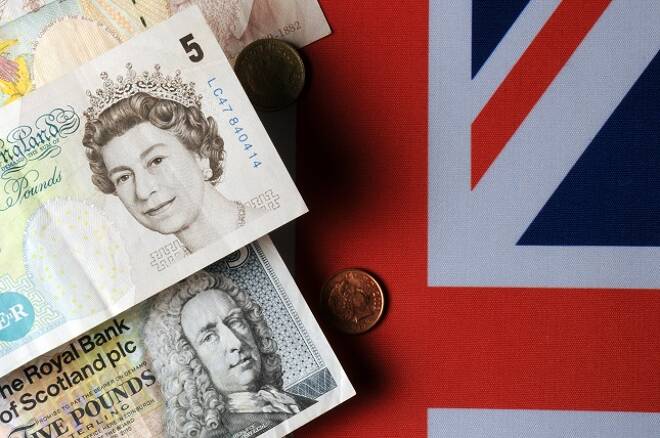Advertisement
Advertisement
GBP, Yield Curve Inversion & Brexit – The Trends Remain
By:
The key UK yield curve (2/10) has inverted, adding to the woes for the UK. With Sterling still mired in multi-year lows and probability of a No-Deal exit from the EU increasing, where does this leave the outlook for Sterling, the BoE and the wider UK economy?
The Trend is King
The Pound took a knock after the UK yield curve inverted, in sympathy with the inversion seen on the US curve. The Gilt 2-/10-year yield differential went negative for the first time since the global financial crisis of 2008. This follows preliminary UK Q2 GDP data, released last Friday, unexpectedly showing a negative reading, of -0.2% q/q, and comes with markets bracing for the risk of a disorderly no-deal Brexit (which was given a median 35% probability of happening in the latest Reuters poll, up from 30% previously). The UK currency has reversed intraday gains that were seen after warmer than expected CPI data and on news that the speaker of the House of Commons, John Bercow, stated that he will fight to stop PM Boris Johnson from shutting (aka proroguing) parliament as a means to force through a no-deal Brexit.
Cable has dropped back to levels around 1.2065-70 after printing an intraday high at 1.2076. The day’s low, seen during Asian hours, is at 1.2050, and the 31-month low seen on Monday is at 1.2015.
Regarding Brexit, the scene is set for a final showdown between anti-no-deal members of parliament and the pro-no-deal Brexiteers, which include Prime Minister Boris Johnson and his cabinet (who lead a weak minority government with a working majority of just one, and with a portion of their own Tory members disposed to stopping a no-deal eventuality, but who would be galvanized by some favourable polling).
The battle will commence on September 3, when parliament reopens after the summer recess.
The BoE Problem
The UK curve also reflects the BoE dilemma. The UK 2-10 year curve inverted after higher than expected CPI readings and remains virtually flat even after the initial excitement over the higher than expected headline reading has settled down. The 2-year is trading at 0.454%, up 0.5 bp, while the 10-year is down -3.6 bp at -0.455%. The above-target inflation reading of 2.1% followed labour data on Tuesday that showed a further acceleration in wage growth, and while a Brexit-related slowdown in economic activity may reduce wage pressures, the rise in CPI is likely to at least partially reflect the decline in Sterling, which is pushing up imported inflation.
For the BoE the debate following a hard Brexit would be whether to accept the likely impact of additional inflation pressures and focus on the growth impact, which ultimately will also have a dampening effect on inflation. In the meantime, the yield curve could well invert more if a no-deal Brexit scenario becomes even more likely as the Reuters polling suggests. The trend remains very much biased to the downside for Sterling in the inevitably volatile weeks ahead of October 31.
Stuart Cowell, Head Market Analyst at HotForex
(read our HotForex Review)
About the Author
Stuart Cowellcontributor
Stuart has been trading the global markets since 1997 and has also run his own consultancy.
Advertisement
